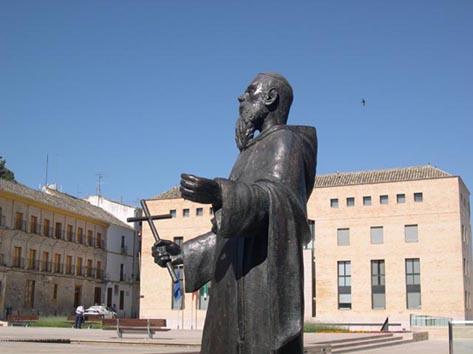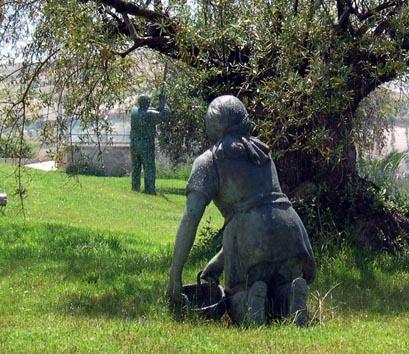Baena

This municipality is located in the southeast of the province of Córdoba, between the Campiña and the Subbética. Its landscape is hilly, full of cereal crops and olive trees.
The town, located on a hill, stretches across hillsides to the Plaza de España square, and is a compact complex made up of narrow winding streets, traditional and majestic houses. The old town comprises the top and the modern parts of the town, right from the aforementioned square, with the N-432 road dividing both areas.
In the old town, and more exactly in the Al-Medina, stand out the Santa María la Mayor church, with the oldest information about it dating from 21 August, 1280; Madre de Dios church and convent, founded in 1510; and the 9th-century old fortress/castle, as well as several gates to access it. In the Plaza de la Constitución square, formerly called Plaza del Coso, next to the administrative buildings, there is the Casa del Monte, from the 18th century. Adjoining this square, in Santo Domingo de Henares street, there is La Tercia building, from 1791, which used to be an economic and agricultural building, and is now the local Museo Histórico Municipal museum.
History
Its foundation is attributed to the tribe of the túrdulos, who called it Martola, in the 6th century B.C. Garcia y Bellido identifies it with the Iponuba (Hijo-nova) mentioned by Pliny.
The ancient inhabitants of Iponuba founded present-day Baena in a strategically-superior location atop a nearby hill called Castro Vinaria after the town was destroyed in the 1st century. Ptolemy situated Baniana in the region belonging to the túrdulos. Julius Caesar gave it the dignified title Julia Regia.
The town of Bayana was an important stronghold during the Moslem occupation. In the 8th century, the town grew around the castle and in the 9th it was the scene of a Muladi rebellion led by Umar ben Hafsun, who conquered it. In the 10th century, it became the capital of the cora (region) of Cabra when the alcazaba (fortress) was built.
In 1240, King Ferdinand III surrendered the town without a fight to his brother, Alfonso de Leon. John II gave aristocratic control of the town to Diego Fernandez de Cordoba in 1394.
Eminent citizens
Qasim ben asgab, 9th century, historian and geographer.
Juan Alfonso de Baena, poet and author of the Cancionero de Baena (Collection of Baena Verse), 15th century.
Carrillo de Sotomayor, poet, 16th century.
Luis de Salazar, chronicler.
Manuel M. Trujillo, bishop.
Santo Domingo Henares, bishop, 18th century.
Jose Amador de los Ríos, writer and essayist, 19th century.
Valverde y Perales, writer and historian, 19th century.
Diego de Monroy, painter, 18th century.
Jose Maria de los Rios, sculptor.
Demetrio de los Rios, poet, architect and archaeologist.
Juan de Peñalosa, painter, 14th century.
Miguel Colodrero, poet, 17th century.
Antonio alcalde de Valladeres, 19th century.
Tomas Moreno, El Tempranillo, bullfighter, 20th century.
Miguel Colodrero, poet, 17th century.

- Max 16
- Min 11
- Max 60
- Min 51
- °C
- °F









































